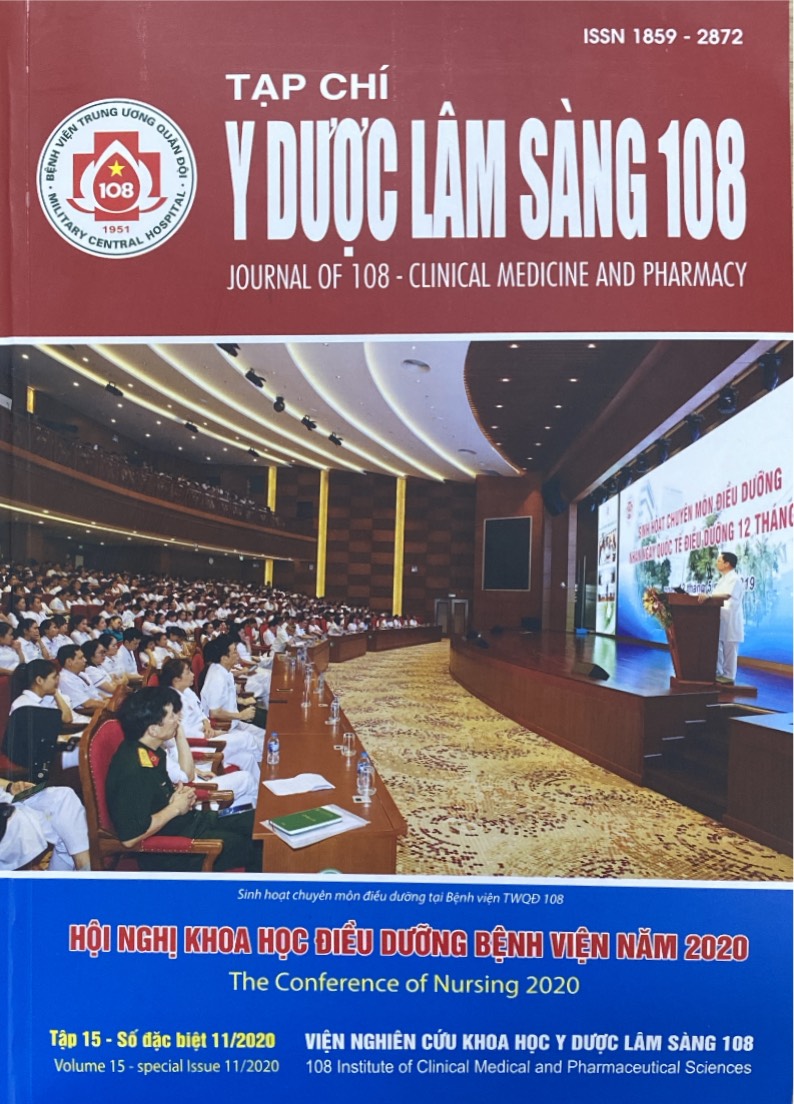Nursing care and rehabilitation exercise for the patients postoperative total hiparthroplasty at 108 Military Central Hospital
Main Article Content
Keywords
Abstract
Objective: To evaluate of nursing care and rehabilitation for patients postoperative total hip arthroplasty at the 108 Military Central Hospital. Subject and method: A descriptive cross-sectional study, the sample size was 89 patients undergoing total hip arthroplasty in Joint Surgery Department at 108 Military Central Hospital from October 2018 to May 2019. Result: In our study, the majority of cases were aged 41 - 60 years, accounting for 71.9%. Male patients were dominant with a male/female ratio of 72/17. Avascular necrosis of the femoral head accounted for a high rate of 71.9%. The rate of preoperative patients undergoing rehabilitation exercise guide was 53.9%. 100% of patients received nursing care, follow-up, painkillers, and antibiotics postoperative, so the postoperative results showed no patients with serious pain, mild pain occupy a high rate of 85.4% of patients. 100% of patients walk on their own with the help of crutches. The group of patients trained to rehabilitate with correct protocols procedure had better results than the group that did not follow incorrect protocols. Conclusion: The results of the study showed that the rehabilitation exercise we built ourselves was very good. However, it is necessary to further strengthen the rehabilitation exercise guide for patients after hip replacement surgery.
Article Details
References
2. Hướng dẫn chẩn đoán, điều trị chuyên ngành phục hồi chức năng. Bộ Y tế, 2016, tr. 149-152.
3. Gould D et al (2001) Visual Analogue Scale (VAS). Journal of Clinical Nursing 10: 697-706.
4. Gausden EB, Parhar HS, Popper JE, Sculco PK, Rush BNM (2018) Risk factors for early dislocation following primary elective total hip arthroplasty. J Arthroplasty 33(5): 1567-1571.
5. Jacob M (2013) Biomechanics of failure modalities in total hiparthroplasty. This dissertation is available at Iowa Research Online: http://ir.uiowa.edu/etd/2487.
6. Monera BA, Shemey E, and Om Ebrahiem AE Elsaay (2015) Efficacy of implementing nursing care Protocol on total hip replacement patient’s outcome in Orthopedic Department at Tanta University Hospital. IOSR Journal of Nursing and Health Science (IOSR-JNHS): 2320-1959; 2320–1940, 4(5): 118-132 www.iosrjournals.org
7. Total Hip Replacement Exercise Guide. Operation Walk(2018). p. http:/ www. Operationwalk. com.
 ISSN: 1859 - 2872
ISSN: 1859 - 2872
